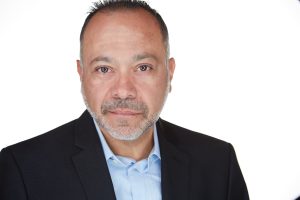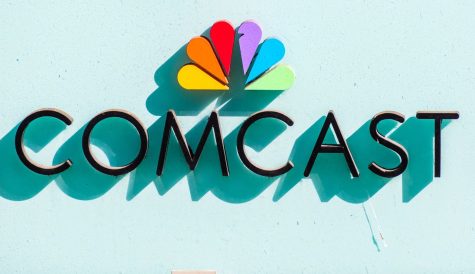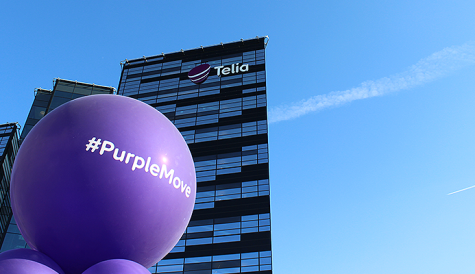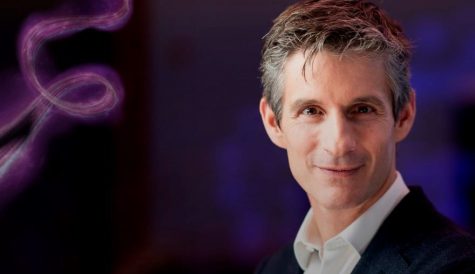Liberty Global’s Rodriguez: fibre more cost-efficient, DOCSIS 3.1 still has potential
Fibre offers a “significantly more cost efficient” upgrade path for cable “than both DOCSIS 3.1 and DOCSIS 4.0,” according to Liberty Global CTO Enrique Rodriguez, while DOCSIS 3.1 is in certain circumstances able to deliver ultra-fast bandwidth to suit current and predicted future demand.

Enrique Rodriguez
Speaking on a Morgan Stanley CTO Symposium webinar yesterday, Rodriguez said that fibre can be “materially more cost effective” than DOCSIS from an energy point of view in particular.
“Fibre is significantly more energy efficient,” he said.
He said that overlaying AI into power management over all network types also held out the promise of delivering big improvements in energy costs.
Running through Liberty’s upgrade plans in its four major markets in Europe, Rodriguez said that the Virgin Media network in Ireland would be fully upgraded to fibre. In the UK, meanwhile, there are two upgrade paths to fibre – via the NextFibre JV with Telefónica and InfraVia for greenfield sites and via FibreOp, the company’s name for the progressive upgrade of its existing HFC network. This will be completed by 2028, he said.
In Belgium, Wyre, Liberty Global-owned local operator Telenet’s joint venture with Fluvius, meant that fibre infrastructure was separated from Telenet to support the deployment of fibre. Rodriguez said that this approach was supported by the existence of Orange as an anchor wholesale customers, which provides an additional incentive for the JV partners to build out the network.
In Switzerland, Liberty Global has previously said it will use wholesale fibre, but it will also launch 2.5Gbps on its existing DOCSIS 3.1 network.
Rodriguez said that Liberty Global was able to leverage its DOCSIS 3.1 networks to deliver speeds as high as 2.5Gbps “even before we deploy DOCSIS 4.0 in the network”.
Finally, in the Netherlands, Liberty has not yet set a timeline for deployment of DOCSIS 4.0 but it is moving ahead, he said.
“It is a country by country solution and in some cases region by region, as in Belgium,” he said.
DOCSIS upgrade
Regarding DOCSIS, 4.0, Rodriguez confirmed that upgrades would not take place before 2025.
“With DOCSIS 4.0 we have the ability to go all the way to 10Gbps…maybe with even 4Gbps upstream…or symmetrical services with maybe 8Gbps”.
He said DOCSiS 4.0 enabled LG to get to 10Gbps without a significant upgrade of the underlying network.
“It is a significant step forward for the industry. The DOCSIS 4.0 development story is [going] exactly as planned,” he said.
Regarding the upgrade of its HFC network based on DOCSIS, Rodriguez said that Liberty in the past has faced a choice between symmetrical FTX deployments or extended spectrum with higher downstream upgrades compared with upstream.
However, he said there are now software stacks available that can deal with both implementations at the same time, so the prospects to deliver a future-proof network using DOCSIS had improved markedly.
Liberty’s existing trial of DOCSIS 4.0 in the Netherlands had delivered positive results, said Rodriguez.
Rodriguez said the cost per home of DOCSIS 4.0 related to the existing RF spectrum available. Costs could vary hugely, he said, both for DOCSIS and for fibre upgrades.
“What we have done in the past, so far only on fibre, is once we have decided to deploy in a certain area, to provide external guidance,” he said.
In the UK the cost was £600-650 per home for XGS PON for a greenfield build. However, looking at the upgrade cost per home across the existing cable network, the cost of upgrading to XGS PON was reduced to about £100.
While Liberty Global in general favours fibre over DOCSIS, Rodriguez said that there was little evidence that customers left HFC simply because they believe fibre is ‘better’.
He said customers receiving good quality of service of HFC had little incentive to move to fibre. It is “lack of satisfaction with the current provider” rather than the underlying network technology that causes people to churn, he said.
It is therefore important to provide “high QoS over HFC” in those areas where Liberty does not upgrade to fibre, said Rodriguez.
“In the UK, you have seen a proliferation of [fibre] alt nets. What we have seen after a few years of construction is that their ability to get to homes passed is OK. Where you see them fall significantly short is in actual penetration, even with competitive prices,” he said.
“With the HFC networks that we provide, we feel confident we can keep customers on this network”.
Quality of Service
Rodriguez said that differentiation, especially in fixed networks, traditionally came down to speed. The same, he said, was also true in mobile.
“Of course quality was important but the key differentiator was speed,” he said.
As speed has increased, Liberty Global now has close to 95% coverage of 1Gbps, so “speed is not the only differentiator”, with people thinking increasingly about quality and upstream speed.
The focus on customer experience being “best in class”.
In fixed, he said, it is now more about providing WiFi in the home, with consumers becoming “more sophisticated…and more demanding”.
Rodriguez said that Liberty has tracked Net Promoter Scores (NPS) closely.
Turniing to the impact of moves from DVB-C to exclusively IP-based TV services, he said such moves had resulted in a 15-point positive impact on NPS across the board, measuring complete satisfaction rather than satisfaction only with entertainment services.
“You don’t have to deal with older bigger set-tops. Recording is in the cloud. It all has a positive impact,” he said.
Regarding WiFi, NPS is “all about reliability”, said Rodriguez. He hailed the company’s multiyear collaboration with Plume to leverage AI to optimise WiFi.
“The battle for NPS becomes more difficult every year but thanks to a combination of technology and service improvements, I think we are able to keep up,” he said.
On the mobile side, Rodriguez said that 5G has attracted consumer attention, but operators have had to invest heavily to build this capacity without a killer app that people are willing to pay for.
“We all feel the penetration to drive 5G penetration, where we have not yet seen a return,” he said.
Nevertheless, he said, expansion of LG’s networks – both 5G and, even more, its fixed network – is a key priority.
Rodriguez said the company was also focusing on AI and what it means for all aspects for the business, including “coming up with an actual implementation plan for AI”.



